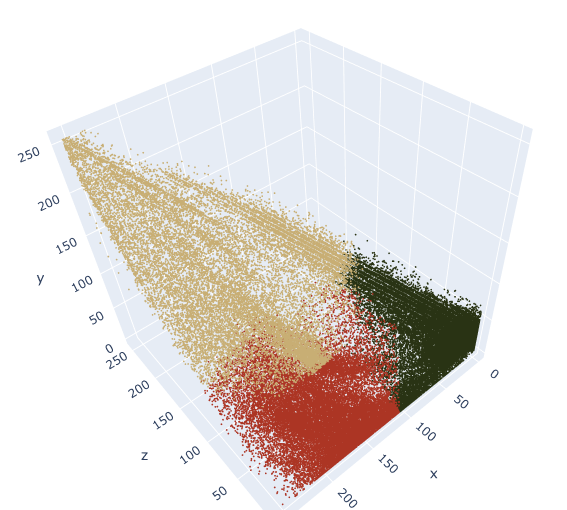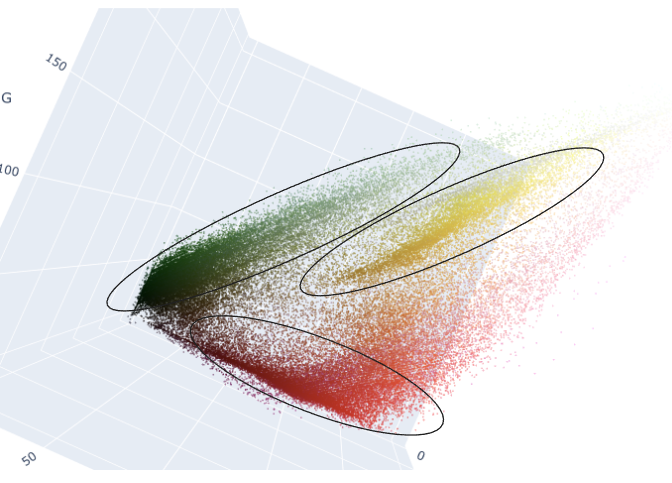I'm using the classic "use-case" example of clustering pixels in a photograph. I've tried K-means, agglomerative clustering, and DBSCAN. When I plot the RGB coordinates in 3-D space, all 3 techniques return variations of a similar clustering scheme. As an example, here is how K-means clustered the data:

What I'd like to see, if possible, is a clustering scheme that adheres more closely to what a human observer would identify as the "natural" clusters evident in the dataspace. Here's an example (note that this is the same data, where the color of each pixel represents its actual RGB value in the photograph):
I'm trying to capture these long, narrower striations that I'm seeing.
Any advice would be much appreciated!

